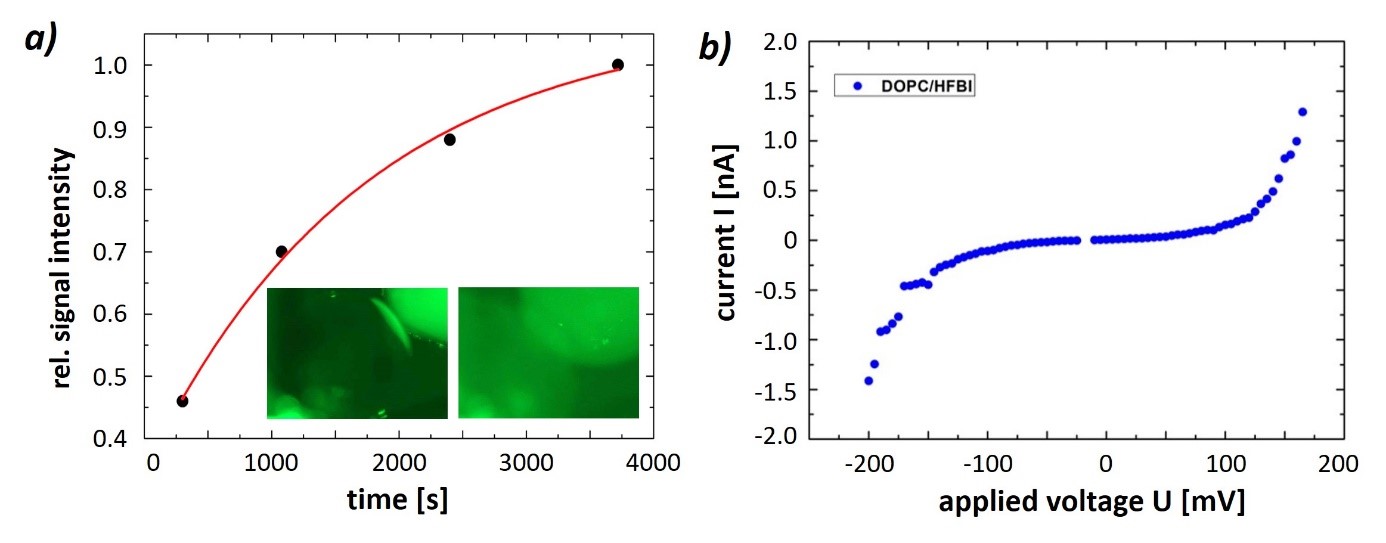AG Prof. Dr. Ralf Seemann
| |
|
In the previous years, we developed and optimized a 3D microfluidic platform that enables fabrication of lipid bilayers and testing their properties. In this project, the microfluidic platform is used to explore protein channels in HFBI and HFBI containing phospholipid bilayer and their electroporation properties.
Together with our colleagues Karin Jacobs, Hendrik Hähl (both experimental physics) we formed and explored bilayer exclusively consisting of hydrophobins (HFBI, wild type and mutants), which are natural proteins produced by fungi. In this context, we are exploring the physical properties of ion channels inserted into the HFBI bilayer, cf. Fig. 1a,b, demonstrating the formation of functional -hemolysin channels. Taking advantage of the extreme mechanical stability of HFBI bilayer, we aim to reconstitute giant protein channels in HFBI and HFBI containing phospholipid bilayer and explore their properties. Besides, we explore the reconstitution of some HFBI proteins inside a DOPC bilayer that drastically change its electroporation properties. Experimental results of transport across lipid bilayers by ion channels and electroporation shall be compared to numerical results obtained by MD or coarse-grained Monte Carlo simulations in collaboration with Jochen Hub (Theoretical Physics) Reza Shaebani (Theoretical Physics).

Group members on this project: Dr. Jean-Baptiste Fleury, Prof. Dr. Ralf Seemann
Internal collaborations: Prof. Dr. Karin Jacobs, Dr. Hendrik Hähl, Friederike Nolle (Experimental Physics, Saarland University),
Prof. Dr. Jochen Hub, Reza Shaebani (Theoretical Physics, Saarland University),
Prof. Dr. Markus Bischoff (Universitätsklinikum des Saarlandes, Institut für Medizinische Mikrobiologie und Hygiene))
Funding: